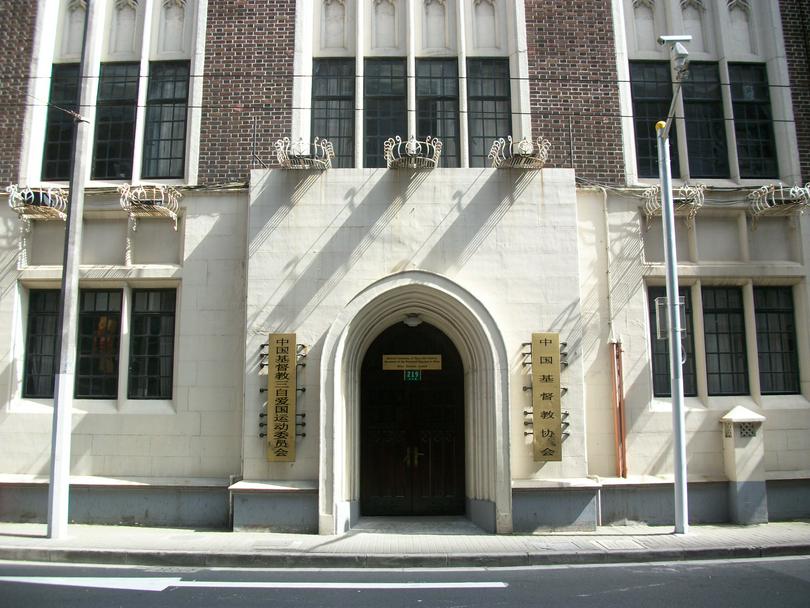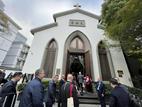The Three-Self formula, also known as the Three-Self principles, is a missiological strategy used to establish indigenous churches. Its principles are: self-governance, self-support (i.e., financial independence from foreigners), and self-propagation (i.e., indigenous missionary work). First coined in the mid-19th century by various mission theorists, it remains in use today in the Three-Self Patriotic Movement (TSPM) on the Chinese mainland.
Origin of the Theory: Founders and Development in Brief
Henry Venn, Rufus Anderson, and John Nevius are the major architects of the Three-Self theory of the indigenous church.
Henry Venn (1796 - 1873) was an Anglican clergyman who is recognised as one of the foremost Protestant mission strategists of the nineteenth century. He served as general secretary of the Church Missionary Society from 1841 to 1873 and was the first to articulate the Three-Self principle.
Rufus Anderson (1796 – 1880) was an American minister who spent several decades organizing overseas missions. He served as the foreign secretary of the American Board of Commissioners for Foreign Missions. It was believed that Anderson, independently of Venn, also developed the Three-Self theory around the same time to promote the indigenous church movement.
John Nevius was an American missionary to China and Korea in the late 19th century. He lived in the times of Venn and Anderson and further popularised the "three-self" paradigm and applied it to the local churches in China and Korea. The Three-self strategy was used in Korea successfully, resulting in explosive church growth there.
Application in China: Three-Self Movement
The Three-Self Movement (TSM) in Chinese Protestant Christianity is certainly the most significant application of the Three-Self principles. The history of application in the Chinese context can be traced back to the late nineteenth century.
By the year of 1877, discussions of integrating the Three-Self principles into churches in China were already prominent among the missionaries in China. In 1892, the Three-Self principles in China were formally drafted during the Christian Mission Conference in Shanghai, which represented a universal agreement for establishing the principle as the underlying guide for churches in China.
In 1922, amid the climax of the so-called anti-Christian movement, the National Christian Conference was held in Shanghai, marking a significant milestone in the history of the indigenous church in China. The movement, driven largely by intellectuals, viewed Christianity as a major obstacle to China's attainment of national independence. Many alleged that it was the vanguard of Western imperialism. Against this backdrop, the theme of the documents produced from the conference conveyed strong desires concerning self-reliance in building the church in China.
The year 1949 was a watershed moment in the history of the Three-Self development in China.
In October, the Chinese Communist Party (CCP) formally established its single-party rule in China. Beyond politics, the Party also sought to control other aspects of the country. Christianity undoubtedly stood at the center of the new government's attention, for it had a history of being associated with organizations outside of China. Therefore, the CCP utilized the already existing Three-self principle as a tool to rid the church of imperialist influence, first by demanding a confession and loyalty declaration from the church people.
In April 1951, the Three-Self Movement was renamed the Chinese Christian Resist America-and-Help-Korea Three-Self Reform Movement, commonly known as the Three-Self Reform Movement (TSRM). In 1954, on the suggestion of Wu Yao-tsung, a Protestant leader in China, the movement was finally renamed as the China Christian Three-Self Patriotic Movement (TSPM).
The attempts of Catholic missions to indigenize the clergy and Christian practices in China have a long history, dating back to the 17th century. In 1957, following the establishment of TSPM, a group of Chinese Catholics met with officials from the CCP and the Religious Affairs Bureau in Beijing to discuss the future of Catholicism in China, which had so far not been at the center of religious affairs. Resulting from the conference was the Chinese Catholic Patriotic Association (CCPA), a new establishment sanctioned by the Chinese Communist government for the governing of all bodies of Catholics in China.
During the Cultural Revolution from 1966 to 1976, the government prohibited any sort of religious activity. However, religious practices didn't disappear as the government expected. Rather, they went underground. It was during this time that the famous Chinese House Churches movement emerged. Evolving from meeting points of small groups, these family-sized churches soon grew into thousands in number. Operated covertly and free from sanctions by the Chinese government, many Christians from these churches consider their churches to be genuinely following the Three-Self principles.
In the spring of 1979, Chinese churches resumed worship after the Cultural Revolution. To revive the church, at the third national Christian conference in 1980, the Chinese Christian Council (CCC) was founded to unite and provide services for churches in China by formulating the church order and encouraging theological education. Together with the TSPM, the organizations are known as the lianghui (两会), or "two organizations," and are overseen by the United Front Work Department (UFWD) of the Central Committee of the CCP.
UFWD was created during the Chinese Civil War and was reestablished in 1979 under paramount leader Deng Xiaoping with an overarching mission to imbue the communist cause's elements in the Chinese society. In 1980, the CCP Central Committee approved a request by the UFWD to create a national conference for religious groups. TSPM, the Catholic Patriotic Association, the Islamic Association of China, the Chinese Taoist Association, and the Buddhist Association of China—the five major religious groups in China—were participants.
The UFWD works to unify all Christians in China to align with the government's political and social agenda. As such, matters of religious beliefs, practices, and missions will be inevitably politicized and, inevitably, subordinated to the agenda of the Party. Under politicization and subordination, the concept of the three-self principle is fundamentally changed from a religious one to a political one.
At present, the churches in the Chinese mainland are all practicing self-support, self-reliance, and self-propagation under the Religious Affairs Regulations (2017 revision). The three-self is now a policy, rather than the goal of the church. The question to ask is, to what extent does the Three-Self practice truly represent the voices of Chinese Christians?












